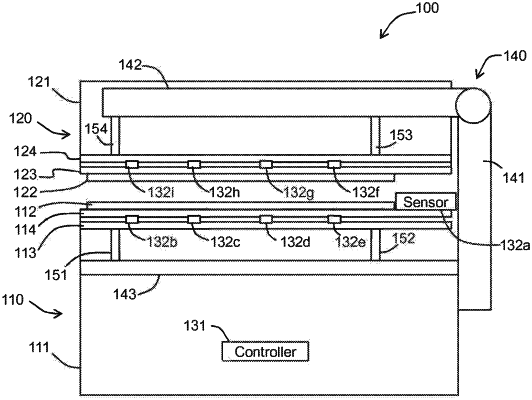| CPC A47J 37/0611 (2013.01) [A47J 2037/0617 (2013.01)] | 12 Claims |

|
1. A method of controlling a cooking apparatus, comprising:
initiating a cooking cycle by positioning a food product upon a lower heating plate of a cooking appliance;
detecting a food product on a lower heating plate with at least one sensor;
identifying an initial thickness of a food product on the lower heating plate of the cooking apparatus;
identifying a predetermined cook time for a food product;
calculating whether a difference exists between an initial gap value corresponding to the initial thickness of the food product and a predefined final gap value;
when the step of calculating the difference between the initial gap value corresponding to the initial thickness of the food product and the predefined final gap value results in a difference being calculated, adjusting the position of the lower heating plate with respect to an upper heating plate to result in compression of the food product disposed upon the lower heating plate until there is no longer a difference between the thickness of the food product and the predefined final gap value, and controlling a rate of ascent of the lower heating plate toward the upper heating plate based on the calculated difference between the initial gap value and the predefined final gap value;
controlling the rate of ascent of the lower heating plate until the predefined gap value is reached; and
sensing that the food product has been cooked based upon a combination of the predetermined final gap value being reached and the predetermined cook time being elapsed.
|